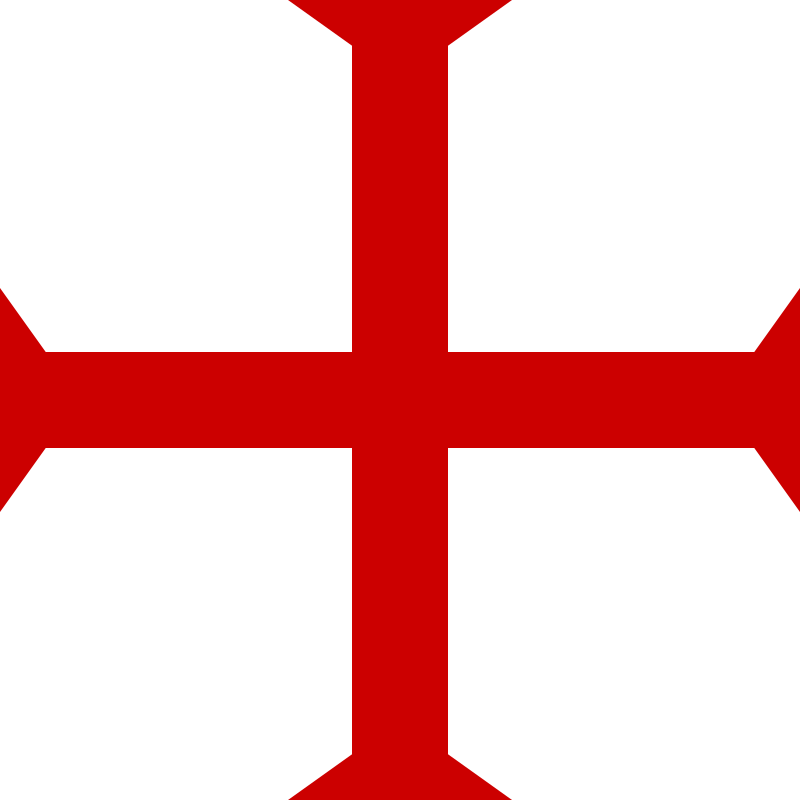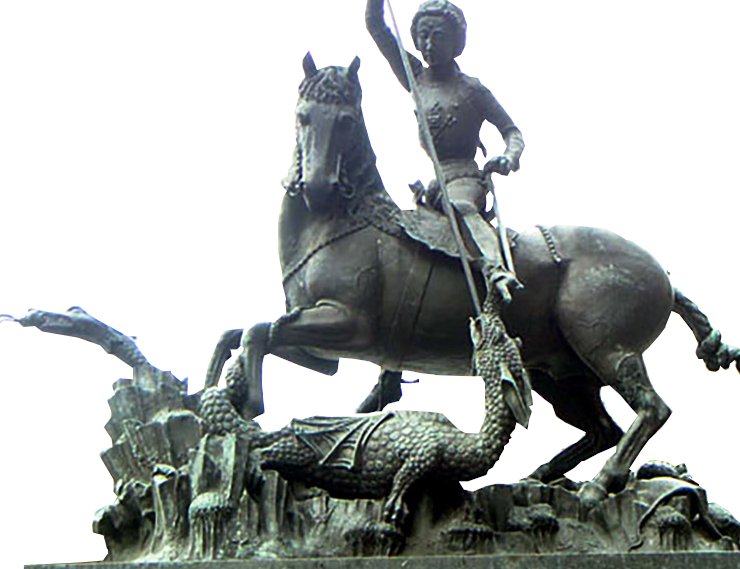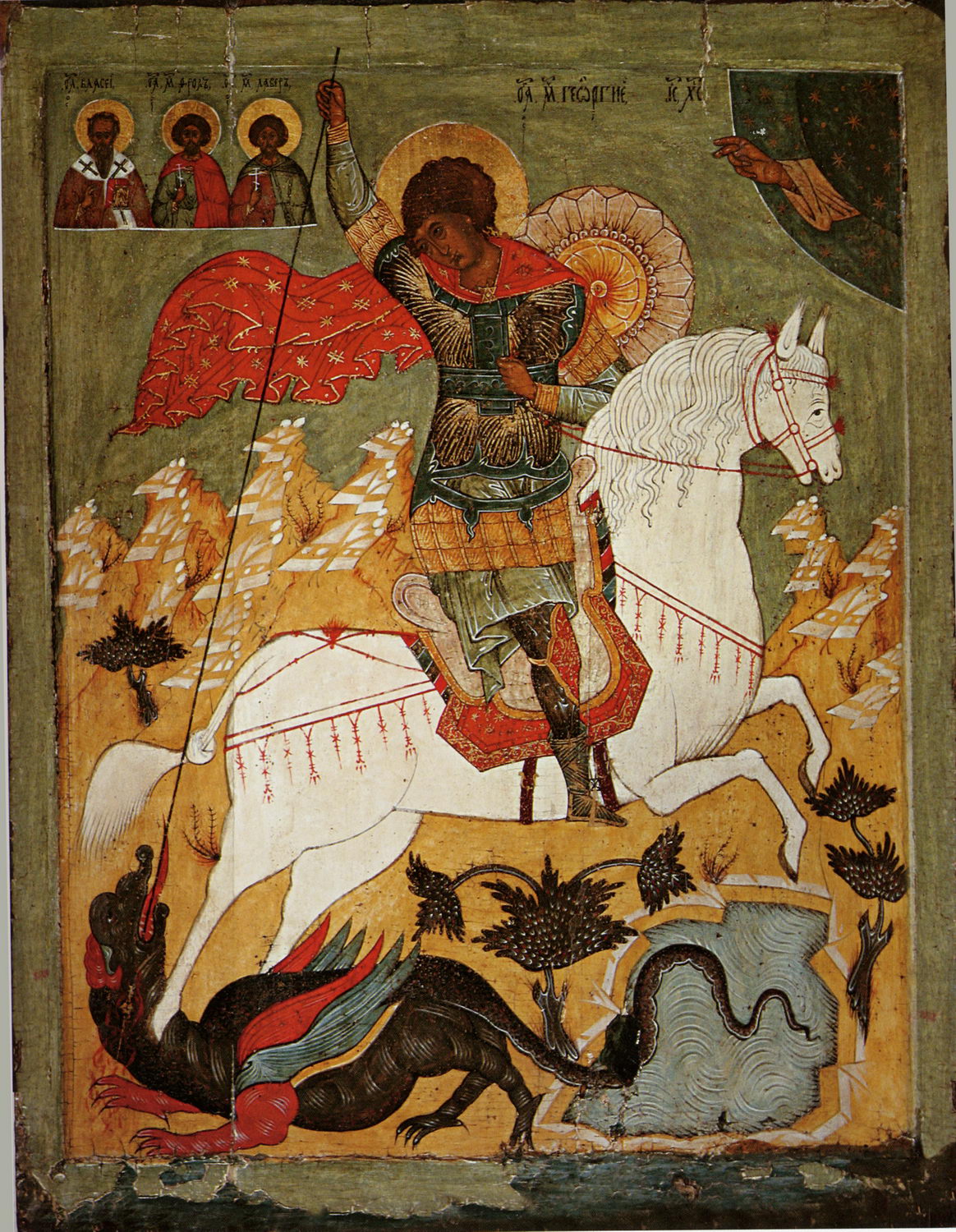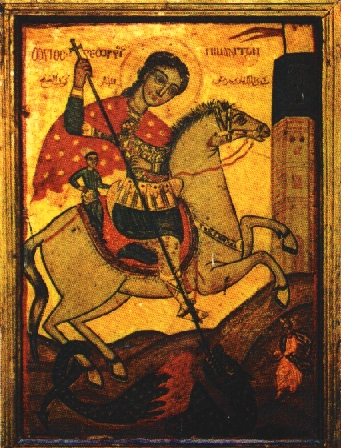Ancient Psychedelia: Alien Gods & Mushroom Goddesses
Online Book - Chapter 17, Page 323
Back to Online Book Mainpage / Next Page (Chapter 17, Page 324)
 (61e) Flag of the Knights Templar St George of England St George was a Roman soldier of Greek origin who was killed for refusing to recant his Christianity to Rome. There are both Latin and Greek versions of his legend that trace to the 4th or 5th centuries. The Dragon aspect of the legend came into play in the 11th century. George was executed by decapitation in 303 AD. (43) In the Golden Legend, by 13th-century Archbishop of Genoa Jacobus da Varagine, George's death is at the hands of Dacian, in about the year 287. (44) The statue of St. George, cast in 1373, which resides in Prague is said to be the oldest standing gothic statute in central Europe (71h) and if you look just below the dragon, you may find some mushrooms lurking about. (45) Paintings of St George from the 16th century show him wearing a red cap with gold stars and slaying the dragon beneath him (71g, i).  (71h) St. George Slays the Dragon, Prague Castle c. 1373 AD By 1000 AD, post Byzantium pre-Dynastic Papacy and King John of Normandy, we see a very different approach to the serpent/mushroom mythology. What we get is a medieval twist where nothing is revealed openly anymore, but culturally disguised in the most sophisticated ways imaginable. The sophistication of the artistic approach to occultism would take on new measures as we started to see |
the great artists and literary giants form new mythologies through the philosophical science of alchemy. Alchemy would create a pharmacological parable behind the public mask of “magic.” Whenever the public would read about magical potions, cauldrons, transfiguration, and finding the “Elixir of Life,” or discovering the “Philosopher’s Stone,” they would impart new mental imagery to an old mythical paradigm. The Alchemists were the medieval version of the Greek mythographers and it was their “gnosis” which was the basis for the creation of a new competing philosophy. (71g) From Pskov. Russia c. 1500-1600 AD  (71i) St. George Slays the Dragon (43) https://en.wikipedia.org/wiki/Saint_George (44) William Caxton's Golden Legend (1483), modernised translation by Frederick Startridge Ellis (1900); catholicsaints.info (45) Psychedelic Gospels, p. 173 |
Go Back to Page 322